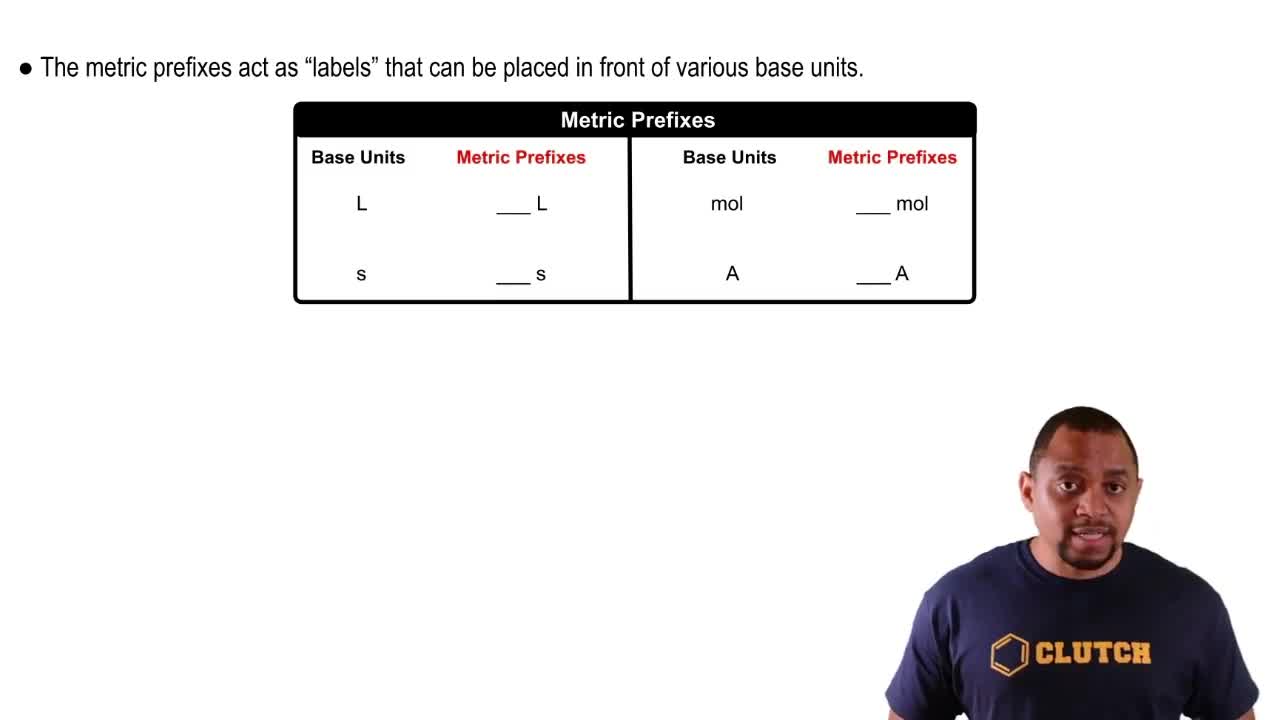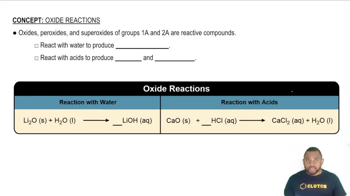(a) After the label fell off a bottle containing a clear liquid believed to be benzene, a chemist measured the density of the liquid to verify its identity. A 25.0-mL portion of the liquid had a mass of 21.95 g. A chemistry handbook lists the density of benzene at 15 °C as 0.8787 g/mL. Is the calculated density in agreement with the tabulated value?
If on a certain year, an estimated amount of 4 million metrictons (1 metric ton = 1000 kg) of nitrous oxide 1N2O2 wasemitted worldwide due to agricultural activities, express thismass of N2O in grams without exponential notation, usingan appropriate metric prefix.
 Verified step by step guidance
Verified step by step guidance
Verified video answer for a similar problem:
Key Concepts
Unit Conversion

Metric Prefixes

Mass of Nitrous Oxide (N2O)

(b) An experiment requires 15.0 g of cyclohexane, whose density at 25 C is 0.7781 g>mL. What volume of cyclohexane should be used?
(c) A spherical ball of lead has a diameter of 5.0 cm. What is the mass of the sphere if lead has a density of 11.34 g>cm3? (The volume of a sphere is 14>32pr3, where r is the radius.)
Use of the British thermal unit (Btu) is common in some types of engineering work. A Btu is the amount of heat required to raise the temperature of 1 lb of water by 1°F. Calculate the number of joules in a Btu.
A watt is a measure of power (the rate of energy change) equal to 1 J/s. (a) Calculate the number of joules in a kilowatt-hour.
A watt is a measure of power (the rate of energy change) equal to 1 J/s. (b) An adult person radiates heat to the surroundings at about the same rate as a 100-watt electric incandescent light bulb. What is the total amount of energy in kcal radiated to the surroundings by an adult over a 24 h period?
